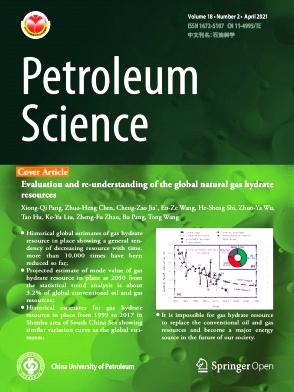In-situ temperature-pressure preserved coring for onshore deep oil and gas exploration: research on the design principles and mechanical properties of the temperature-preserved core chamber
IF 6.1
1区 工程技术
Q2 ENERGY & FUELS
引用次数: 0
Abstract
A novel temperature-preserved core chamber designed for depths exceeding 5000 m has been developed to enhance the scientific understanding of deep oil and gas reservoirs. This temperature-preserved core chamber employs an innovative vacuum layer for temperature preservation and is compatible with a temperature-pressure preserved coring system. The design principles and key parameters of the temperature-preserved core chamber were determined through static analysis. Numerical simulations assessed the mechanical properties of 70, 85, and 100 MPa core chambers under conditions of 120–150 °C. The results demonstrate that the temperature-preserved core chambers withstand the applied stresses without plastic deformation, and the vacuum layer maintains its integrity under these conditions. A 70 MPa class core chamber prototype was manufactured, and system integration tests were performed on a self-developed in-situ coring platform. The system demonstrated stable operation at 70 MPa for 120 min, with pressure fluctuations within 5%. Additionally, the integrated system operated without interference, enabling the successful extraction of cores with a 50 mm diameter. These findings provide valuable theoretical guidance and design recommendations for advancing oil and gas in-situ temperature-pressure preserved coring technologies in high-temperature and high-pressure environments.
陆上深层油气勘探就地保温保压取心——保温岩心室设计原理及力学性能研究
为了提高对深部油气储层的科学认识,开发了一种专为深度超过5000米而设计的新型恒温岩心室。这种保温的芯室采用了一种创新的真空层来保温,并与温压保温的取芯系统兼容。通过静力分析,确定了保温芯室的设计原则和关键参数。数值模拟评估了70、85和100 MPa岩心室在120-150℃条件下的力学性能。结果表明:保温后的芯室能够承受外加应力而无塑性变形,真空层在此条件下保持了其完整性。研制了70 MPa级岩心室样机,并在自主研制的原位取心平台上进行了系统集成试验。系统在70 MPa下稳定运行120 min,压力波动在5%以内。此外,集成系统运行无干扰,能够成功提取直径为50mm的岩心。这些发现为在高温高压环境下推进油气原位保温保压取心技术提供了有价值的理论指导和设计建议。
本文章由计算机程序翻译,如有差异,请以英文原文为准。
求助全文
约1分钟内获得全文
求助全文
来源期刊

Petroleum Science
地学-地球化学与地球物理
CiteScore
7.70
自引率
16.10%
发文量
311
审稿时长
63 days
期刊介绍:
Petroleum Science is the only English journal in China on petroleum science and technology that is intended for professionals engaged in petroleum science research and technical applications all over the world, as well as the managerial personnel of oil companies. It covers petroleum geology, petroleum geophysics, petroleum engineering, petrochemistry & chemical engineering, petroleum mechanics, and economic management. It aims to introduce the latest results in oil industry research in China, promote cooperation in petroleum science research between China and the rest of the world, and build a bridge for scientific communication between China and the world.
 求助内容:
求助内容: 应助结果提醒方式:
应助结果提醒方式:


